Potřebujeme váš souhlas k využití jednotlivých dat, aby se vám mimo jiné mohly ukazovat informace týkající se vašich zájmů. Souhlas udělíte kliknutím na tlačítko „OK“.
ASTM E2058-13a
Standard Test Methods for Measurement of Material Flammability Using a Fire Propagation Apparatus (FPA) (Includes all amendments And changes 7/24/2019).
Automaticky přeložený název:
Standardní zkušební metody pro měření materiálu, hořlavost Použitím šíření požáru zařízení (FPA)
NORMA vydána dne 1.11.2013
Informace o normě:
Označení normy: ASTM E2058-13a
Poznámka: NEPLATNÁ
Datum vydání normy: 1.11.2013
Kód zboží: NS-44134
Počet stran: 31
Přibližná hmotnost: 93 g (0.21 liber)
Země: Americká technická norma
Kategorie: Technické normy ASTM
Kategorie - podobné normy:
Anotace textu normy ASTM E2058-13a :
Keywords:
effective heat of combustion, fire propagation apparatus, flammability characteristics, upward fire propagation, ICS Number Code 13.220.40 (Ignitability and burning behaviour of materials and products), 59.060.20 (Man-made fibres)
Doplňující informace
| Significance and Use | ||||||||||
|
5.1 These test methods are an integral part of existing test standards for cable fire propagation and clean room material flammability, as well as, in an approval standard for conveyor belting (1-3) .3 Refs 5.2 The Ignition, Combustion, or Fire Propagation test method, or a combination thereof, have been performed with materials and products containing a wide range of polymer compositions and structures, as described in X1.7. 5.3 The Fire Propagation test method is different from the test methods in the ASTM standards listed in 5.4 These test methods are not intended to be routine quality control tests. They are intended for evaluation of specific flammability characteristics of materials. Materials to be analyzed consist of specimens from an end-use product or the various components used in the end-use product. Results from the laboratory procedures provide input to fire propagation and fire growth models, risk analysis studies, building and product designs, and materials research and development. |
||||||||||
| 1. Scope | ||||||||||
|
1.1 This fire-test-response standard determines and quantifies material flammability characteristics, related to the propensity of materials to support fire propagation, by means of a fire propagation apparatus (FPA). Material flammability characteristics that are quantified include time to ignition (tign), chemical ( Q˙chem), and convective ( Q˙c) heat release rates, mass loss rate ( m˙) and effective heat of combustion (EHC). 1.2 The following test methods, capable of being performed separately and independently, are included herein: 1.2.1 Ignition Test, to determine tign for a horizontal specimen; 1.2.2 Combustion Test, to determine Q˙chem, 1.2.3 Fire Propagation Test, to determine Q˙chem from burning of a vertical specimen. 1.3 Distinguishing features of the FPA include tungsten-quartz external, isolated heaters to provide a radiant flux of up to 110 kW/m 2 to the test specimen, which remains constant whether the surface regresses or expands; provision for combustion or upward fire propagation in prescribed flows of normal air, air enriched with up to 40 % oxygen, air oxygen vitiated, pure nitrogen or mixtures of gaseous suppression agents with the preceding air mixtures; and, the capability of measuring heat release rates and exhaust product flows generated during upward fire propagation on a vertical test specimen 0.305 m high. 1.4 The FPA is used to evaluate the flammability of materials and products. It is also designed to obtain the transient response of such materials and products to prescribed heat fluxes in specified inert or oxidizing environments and to obtain laboratory measurements of generation rates of fire products (CO1.5 Ignition of the specimen is by means of a pilot flame at a prescribed location with respect to the specimen surface. 1.6 The Fire Propagation test of vertical specimens is not suitable for materials that, on heating, melt sufficiently to form a liquid pool. 1.7 Values stated are in SI units. Values in parentheses are for information only. 1.8 This standard is used to measure and describe the response of materials, products, or assemblies to heat and flame under controlled conditions, but does not by itself incorporate all factors required for fire hazard or fire risk assessment of the materials, products or assemblies under actual fire conditions. 1.9 This standard does not
purport to address all of the safety concerns, if any, associated
with its use. It is the responsibility of the user of this standard
to establish appropriate safety and health practices and determine
the applicability of regulatory limitations prior to use.
Standard Test Method for Heat and Visible
Smoke Release Rates for Materials and Products Using an Oxygen
Consumption Calorimeter Standard Test Method for Determination of
Fire and Thermal Parameters of Materials, Products, and Systems
Using an Intermediate Scale Calorimeter (ICAL) (Includes all
amendments and changes 12/7/2022). Standard Test Method for Heat and Visible
Smoke Release Rates for Materials and Products Using a Thermopile
Method Standard Terminology of Fire
Standards Standard Test Method for Determining
Material Ignition and Flame Spread Properties |
Podobné normy:
Historická
1.1.2010
Historická
1.11.2012
Historická
1.5.2014
Historická
1.8.2014
Historická
1.10.2009
Historická
1.5.2013
Doporučujeme:
Aktualizace zákonů
Chcete mít jistotu o platnosti užívaných předpisů?
Nabízíme Vám řešení, abyste mohli používat stále platné (aktuální) legislativní předpisy.
Chcete vědět více informací? Podívejte se na tuto stránku.


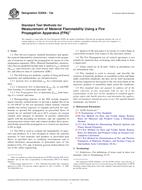
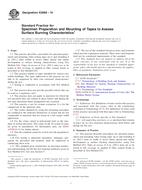 ASTM E2688-10
ASTM E2688-10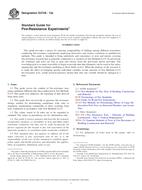 ASTM E2748-12a
ASTM E2748-12a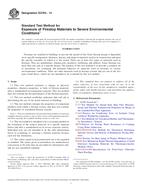 ASTM E2785-14
ASTM E2785-14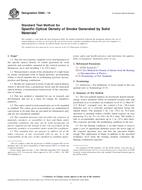 ASTM E662-14
ASTM E662-14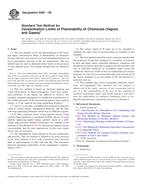 ASTM E681-09
ASTM E681-09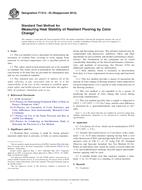 ASTM F1514-03(2013)..
ASTM F1514-03(2013)..
 Cookies
Cookies
